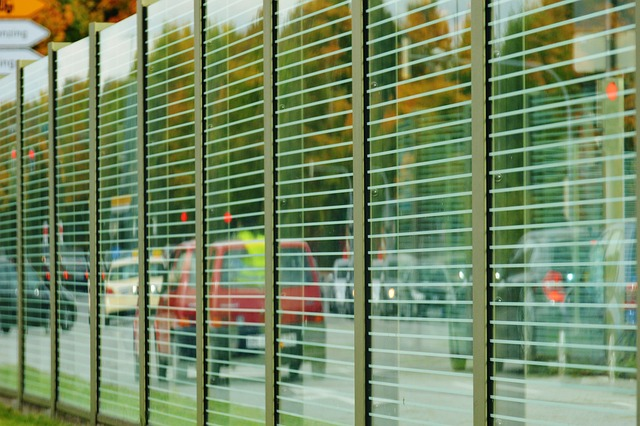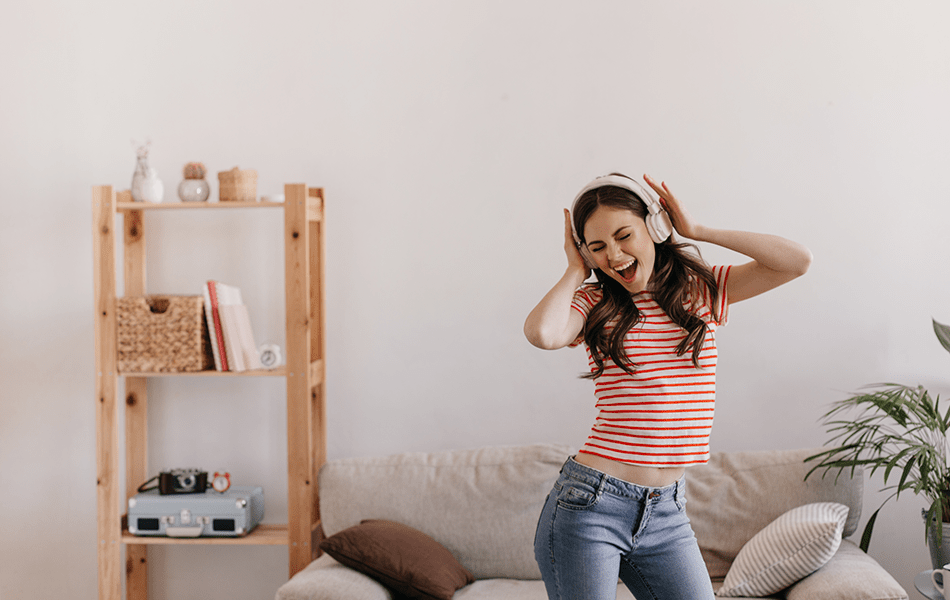Whenever we plan on how to create a harmonious and relaxing home atmosphere, we frequently consider visual aesthetics and physical comfort. The soundscape of our living places, on the other hand, is an often-overlooked factor that considerably adds to our general well-being. The noises we hear in our homes may have a significant influence on our mood, stress levels, and general feeling of well-being. In this article, we will look at how soundscapes may affect the home environment and how we can create a more tranquil and pleasant audio experience by blocking unwanted noises.
Sound is created by the energy released when an item vibrates, causing waves in the air surrounding it. Noise is nothing more than airborne vibration. What we perceive as sounds moving “through” a wall or other object is really sound waves causing the wall to vibrate, which then causes the fresh air on the opposite side of the wall to also vibrate. Noise coming from the outside travels easily and eventually arrives at its final destination, our ears. The eardrum, a sensitive membrane in our ears, perceives these vibrations in the air and registers them in our brains as distinct forms of sound.
Stress and Outside Noise in the Philippines

Noise levels in the Philippines might differ based on location and circumstance. Noise pollution may be highly prominent in metropolitan areas, particularly in big cities such as Manila, due to factors such as heavy traffic, building activities, packed streets, and lively commercial districts. These variables all lead to increased levels of noise during peak hours and in highly populated places. The closeness of traffic hubs, industrial zones, or locations with lively nightlife can also impact the intensity of noise. High noise levels can be caused by congested roads, honking automobiles, and street sellers in some regions. Rural and distant places, on the other hand, tend to have lower noise levels, with a greater focus on natural sounds like birdsong and leaf rustling.
Creating a peaceful soundscape at home might help us relax and achieve peace. The link between stress and noise is well-established, with noise being identified as a substantial contributor to individual stress levels. Noise may have a significant influence on one’s mental and emotional health. It can impede cognitive function, interrupt focus, and interfere with the ability to relax or sleep. Chronic noise exposure can contribute to anger, annoyance, anxiety, and even melancholy. Individuals may feel powerless or have a loss of control over their surroundings, heightening stress levels. Furthermore, noise can drastically alter sleep patterns, resulting in sleep disruptions or insomnia. Even low-level disturbances, such as traffic noise or neighborhood sounds, might interfere with sleep quality, limiting one’s capacity to relax and recuperate.
How to Make your House Soundproof from Outside Noise

Given the significance of noise in stress levels, it is critical to control and reduce exposure to excessive or disruptive noise. Here are some pointers on how to soundproof your home from outside noise.
Read More: How to Easily Soundproof Your Condominium?
Determine the Noise Sources
In order to reduce noise, begin by determining the primary sources of unwanted sounds that enter your house. Different sounds from traffic noise, construction sites, siren noises, neighboring airports, barking pets, and loud neighbors are all common sources of external noises. Understanding the various sources can assist you in determining the best soundproofing options for your scenario.
Seal Windows and Doors
Noise may enter your home through doors, walls, ceilings, and other openings. To make your home quieter, check that these are airtight seal to reduce sound penetration. To cover any gaps or cracks around window frames and entrances, apply weatherstripping and caulking. Door sweeps installed at the bottom of doors can also assist to create a tighter seal and prevent noise leakage.
Read More: The Best Window Treatment Options for Your Home
Set up Sound Barriers
Sound barriers, also known as noise barriers or acoustic barriers, are constructions that are intended to restrict sound transmission between a noise source and a receiver. The fundamental function of sound barriers is to reduce noise and create more calm settings. Placement of furniture, bookshelves, or cabinets against walls shared with loud areas can operate as sound barriers, absorbing or deflecting sound waves. For increased efficacy, sound-absorbing materials such as thick drapes or acoustic panels might be added to these barriers.
Consider placing soundproofing materials on existing walls or ceilings that enable substantial noise transmission. To absorb and attenuate sound waves, acoustic panels or foam can be put on walls. These materials are available in a variety of styles and may be an attractive addition to your interior décor while also successfully reducing noise.
Use Sound Absorption
Sound absorption is the conversion of sound energy into another kind of energy, typically heat, rather than being reflected or transmitted. Sound waves are converted into mechanical vibrations within a material, which eventually dissipate as heat. Sound absorption materials are meant to eliminate reverberation and limit sound wave reflection, resulting in a quieter and more acoustically agreeable atmosphere.
Soft materials such as carpets, thick rugs and upholstered furniture, should be used since it has a sound absorption ability. Upholstered furniture, such as sofas, loveseats, and sectionals, may absorb and soften noise—the bigger the piece, the better. Add soft cushions and throws to upholstered furniture to improve soundproofing.
In addition, soundproofing underlays placed beneath rugs or carpets on hardwood or tile floors can assist limit noise transmission between floors. The additional cushioning decreases sound reflection and absorbs impact sounds, keeping your house quieter.
Install noise-cancelling curtains or window treatments
Thick, hefty drapes or soundproof shades can act as an extra noise barrier. Look for multi-layered curtains or ones that are particularly intended for sound absorption. They can assist to lower noise levels by blocking sound waves from entering your house.
Consider White Noise
Another way to block noise is by adding a background noise which can cover and distract from outside sounds in some instances. White noise machines, fans, or nature sounds may all offer a consistent and relaxing background noise that can assist reduce the impact of outside disturbances.
Remember that while total soundproofing may not always be possible to stop noise, combining these measures can greatly reduce outside noise and provide a quieter and more serene living environment.
Conclusion
The importance of soundscapes in creating harmonious and pleasant home settings should not be overlooked. We may change our living environments into calm havens by carefully arranging our aural experiences, fostering relaxation, focus, and emotional well-being. A properly constructed soundscape may have a tremendous beneficial influence on our everyday lives, converting our homes into sanctuaries that nourish our minds, bodies, and souls, whether it’s through the soothing sounds of nature, peaceful music, or skillfully executed soundproofing.
Bria is the Filipinos’ partner in not only obtaining their own house and lot, but also ensuring that the property is suitable for retirement, particularly for our OFW. One of their kept promises was to construct additional real estate property with an appropriate level of sound for their inhabitants. It is reasonable to say that Bria welcome any audiophile customer today and in the future.





